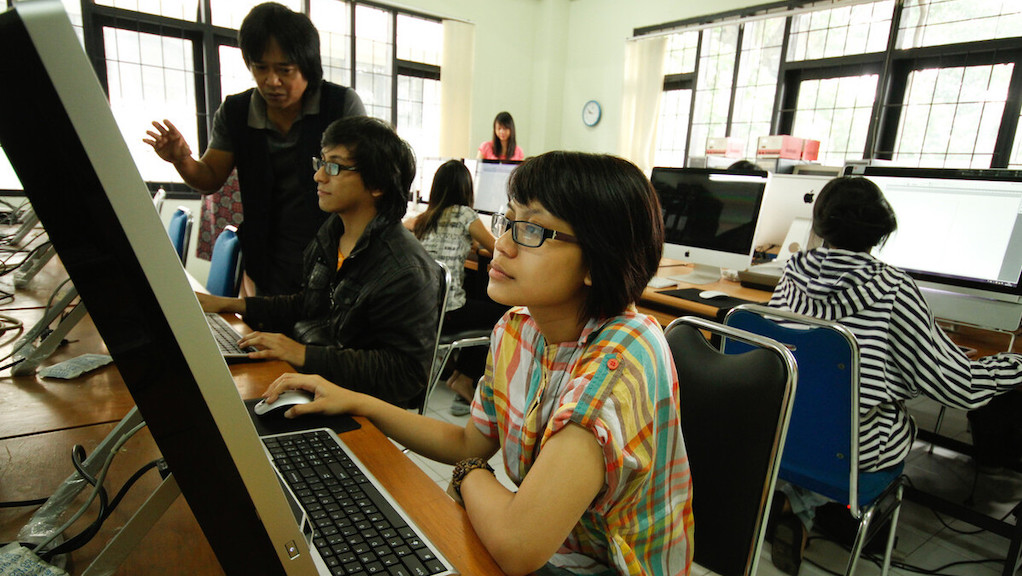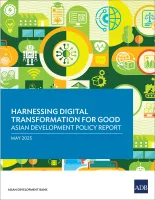
According to the report, individuals with just basic digital skills met with less growth in demand than those with either intermediate or advanced disruptive digital skills. Photo credit: ADB.
Education systems need retooling to meet the growing demand for higher digital skills.
Knowing how to use Microsoft Word, Excel, or PowerPoint is not just enough for employers to take note of an applicant’s resumé.
A new study from the Asian Development Bank (ADB) and LinkedIn said employers in Asia and the Pacific want new hires to have higher digital skills, like digital design, data analytics, data science, machine learning, and programming. The region needs to retool its education systems to meet growing demand for digital literacy.
The report, Digital Jobs and Digital Skills: A Shifting Landscape in Asia and the Pacific, highlights how basic digital literacy is now essential, and those with higher digital skills stand to benefit more. It provides relevant, data-driven insights for governments, industry, and the international community on shifts in the markets for jobs, skills, and credentials.
Near-universal requirement
The report said 75% of employers in four countries in Asia and the Pacific report a rise in demand for new hires with digital skills over the last 5 years.
About 70% of all surveyed employers in Bangladesh, India, Indonesia, and the Philippines now consider digital skills, such as proficiency with collaboration tools or basic internet skills for commerce, as essential workplace skills.
“The digital economy in Asia and the Pacific is growing at great speed, with e-commerce expected to reach $2 trillion by 2025. As digital transformation reshapes jobs in the region, there is an urgent need to invest in digital skills and talent,” said ADB Sustainable Development and Climate Change Department Director General Bruno Carrasco in a news release. "As digital skills and credentials grow in prominence, we must ensure that education systems are helping to narrow the digital divide for disadvantaged or marginalized people—and not widening them."
The report said policy makers and education and training providers need to have deliberate action plans that scale up opportunities for training in digital skills. Grants and scholarships based on merit and need are critical to equalize opportunity for digital skill development. The online learning ecosystem can be further diversified by making content available in local languages. The training of women with advanced disruptive tech skills must expand. Business leaders should leverage existing talent in adjacent fields like life sciences, where women with similar foundational skills are well represented.
Emerging trends
The report said demand for talent that can support digital transformation has been especially strong, indicating a deepened appreciation for skills and competencies that can modernize organizations’ digital capability. It identified these trends:
• Basic digital literacy is now essential, and workers with higher skills benefit more. The survey of employers showed that, on average, employers required 8 of the last 10 candidates hired in the past year to possess at least basic digital literacy and skills, and 4 of the last 10 hires to possess advanced digital skills. Individuals with just basic digital skills met with less growth in demand than those with either intermediate or advanced disruptive digital skills.
• Fundamental coding and programming skills are an emerging need across all jobs.Across all countries surveyed, programming languages like Structured Query Language (SQL) and Java consistently appear among the digital skills most in demand for different job categories. This indicates the broad applicability and relevance of these fundamental coding and programming skills, required for data analysis and building software and hardware tools. Within Asia, the tech hubs of India and Singapore require a similar mix of skills, reflecting a range of expertise that includes building tech infrastructure and enterprise systems (e.g., C++ skills) and AI (e.g., Python programming language). By contrast, Indonesia, Malaysia, and the Philippines share a similar mix of skill profiles that include digital literacy (e.g., Microsoft Office) and graphic design (e.g., Adobe Photoshop and Adobe Illustrator).
• Short- and medium-duration online digital skill training programs witnessed high growth rates in the past year. Among the online training providers surveyed for this study, 28% said their most popular digital skill courses typically last 3–6 months. The next most common course length, as per 25% of the surveyed training providers, is those that last less than a week and are distillations of medium- or full-length courses intended to provide a taste of the topic. Short courses are found to be ideal for professionals who wish to refresh their domain knowledge or catch up with the latest advances.
• Smart cities and e-learning need digital skills more than the renewable energy sector.Digital talent comprises 75% of the e-learning industry and 70% of the smart cities industry. Although the percentage of digital talent in renewable energy is lower at 56%, analysis shows that many top emerging digital skills relate to understanding, visualizing, and using data. These data skills are critical as the industry moves from perfecting engineering innovations and clean energy hardware, toward innovations in applications like smart grids, the Internet of Things, and energy forecasting, which are becoming more important as electric utilities adapt to decarbonization.
• E-learning has enjoyed a sharp rise in hiring across all countries surveyed. Employees in e-learning have a broader range of educational backgrounds than those in renewable energy and smart cities, and they hold a wider variety of degrees. Women and young people have a predominant share of the employee base in the sector. It is also a relatively new industry with a growth outlook, so it is attracting young talent.
• Data analytics is a fast-growing skill across all industries. The ability to use and analyze data is among the fastest-emerging skill categories in e-education, smart cities, and renewable energy.
• Millennials dominate in the smart city, e-learning, and renewable energy workforce.The workforce in the three industries is largely comprised of millennials, born from 1981 to 1996, and who are in the early and middle stage of their careers. Gen Z, born from 1997 to 2012, makes up a larger share of the workforce in India and Indonesia. The e-learning industry, particularly in India, Indonesia, and the Philippines, has the largest shares of Gen Z and millennials.
• A revolution is under way in how learning and competencies are recognized. Among all respondents to the digital credentials survey commissioned by ADB, 89% agreed that digital credentials will become a critical part of higher education. However, this is not expected to diminish the market value of traditional credentials in the near term. Three-quarters (77%) of employers surveyed believe that traditional and digital credentials will coexist and complement each other in the near future.
• Digital credentials currently accompany more than a third of job applications. Among all employers surveyed, 62% reported that job applications list at least one digital credential often or very often. In Bangladesh and India, where competition for a limited number of jobs is stiff and candidates need to stand out, 80% of all job applications reported digital credentials, 20 percentage points more than in the United States. In Indonesia and the Philippines, a lower share of candidates presents digital credentials than in the US, which is perhaps reflective of lower digital connectivity and the number of digital credential issuers.
• Digital credentials are more prevalent for junior positions. Employers are most comfortable hiring entry-level professionals who present at least one digital credential. The weight accorded digital credentials in hiring decreases with the seniority of the position being filled. Among all surveyed employers, 65% reported hiring entry-level staff based on digital credentials, decreasing to 50% for mid-level positions and 45% for senior ones.
• Digital certificates are the most common digital credentials, followed by digital licenses. Among all surveyed employers, 59% reported having hired a candidate who presented a digital certificate, and 47% of employers reported hiring a candidate with a digital license.
• Equal access to digital skills and credentials by gender requires affirmative action. Almost two-thirds of surveyed online trainers, or 64%, do not offer digital skill programs that are packaged specifically for women, disadvantaged youth, indigenous communities, people in poverty, or people living in remote locations with little or no access to the internet. In Asia, female enrollment in digital skill courses is reported at only about half of male enrollment, and 60% of all surveyed employers reported that fewer than 30% of applications submitted by female candidates offer digital credentials.
Recommendations
The report recommended the following to expand the universe of digital skills and digital credentials in the region:
- Step up the pace of digital skill development to ensure future readiness;
- Enable digital skill development for advanced and disruptive technologies;
- Expand skills and training for fundamental coding and programming skills;
- Expand offerings for modular skill development and talent stacking;
- Nurture an ecosystem to recognize learning in traditional and other ways;
- Expand market understanding and acceptance of digital credentials;
- Promote partnership between traditional educational institutions and digital trainers;
- Subsidize and diversify online learning offerings to promote equity and inclusiveness;
- Reenergize training on the job and employee reskilling and upskilling;
- Expand digital talent for online learning platforms and smart cities; and
- Tailor skill development opportunities for different age groups and industries.
This article was first published by BIMP-EAGA on 14 November 2022.

BIMP-EAGA
The Brunei Darussalam–Indonesia–Malaysia–Philippines East ASEAN Growth Area, or BIMP-EAGA, is a cooperation initiative established in 1994 to spur development in remote and less developed areas in the four participating Southeast Asian countries.

